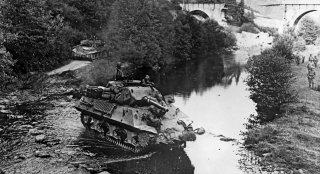The Army Isn't A Fan Of Tank Destroyers, But They Helped Win World War II
They did their job well.
Active, self-propelled tank-destroyer battalions were judged to have killed 34 tanks each on average, and about half as many guns and pillboxes. Some units, such as the 601st, reported more than 100 enemy tanks destroyed. This led to an average kill ratio of two or three enemy tanks destroyed for every tank-destroyer lost.
The ultra-lightly-armored M18, with its unexceptional gun, had the bestratio of kills to losses for any vehicle type in the Army!
Why? Ultimately, it may come down to how tank-destroyers were employed, even though it was not the manner intended by Army strategists. While Sherman tank units sometimes embarked on risky assaults and unsupported rapid advances, tank-destroyers usually deployed in support of combined arms task forces with infantry.
This cooperation with friendly forces meant they showed just where they needed to be, spotted the enemy first and got off the first shot. And being the first to shoot usually determined the outcome of armored engagements in World War II, regardless of the quality of the vehicles involved.
Tank-destroyers also taught the Army not to over-specialize. There was no need for multiple classes of tanks that were strong in one respect and weak in another. The post-war concept of the main battle tank embraced this idea to the fullest.
As such, the U.S. tank destroyer branch constitutes one of the most curiously successful failures in U.S. military history.
This article originally appeared at War is Boring in 2016 and is being republished due to reader interest.
Image: Wikipedia.

